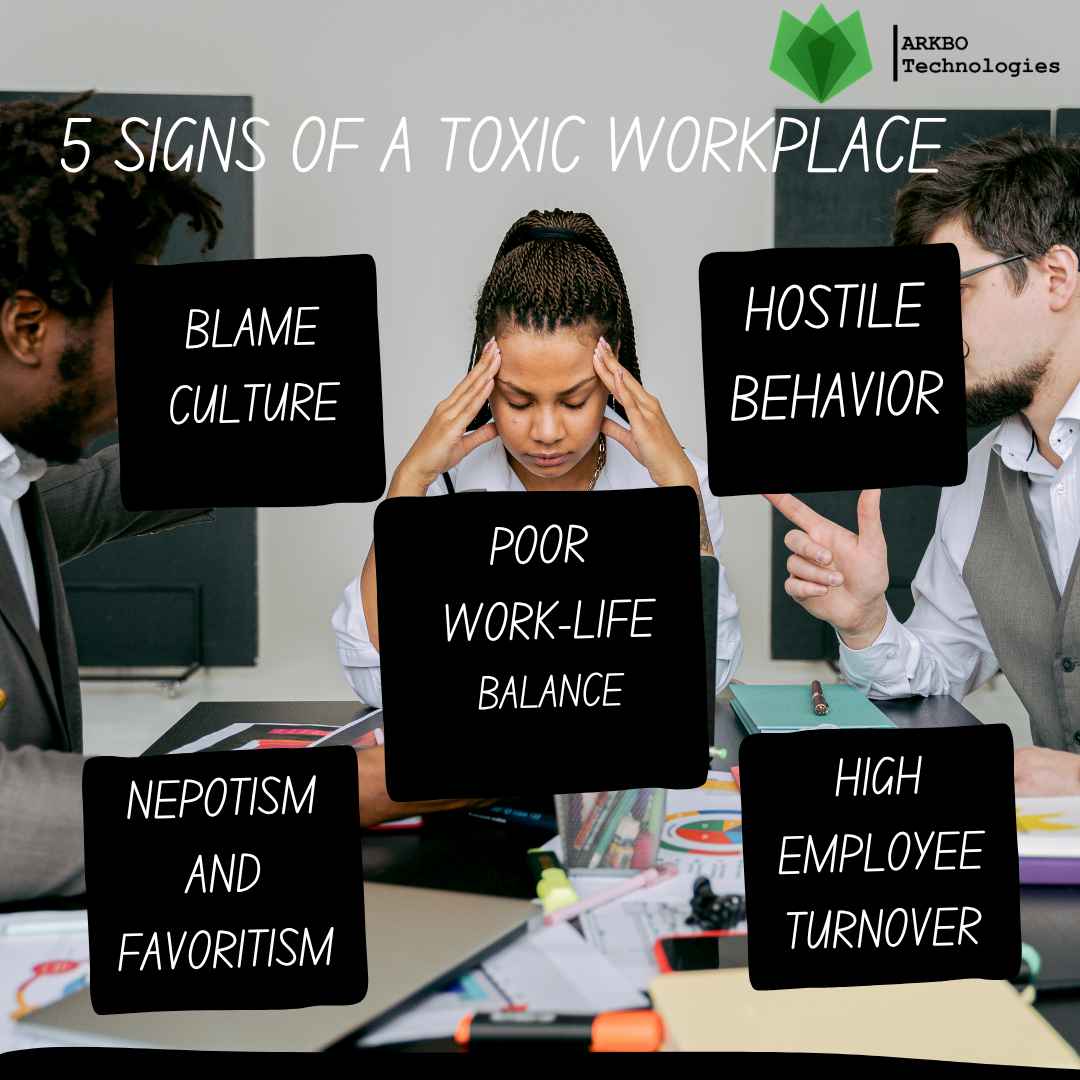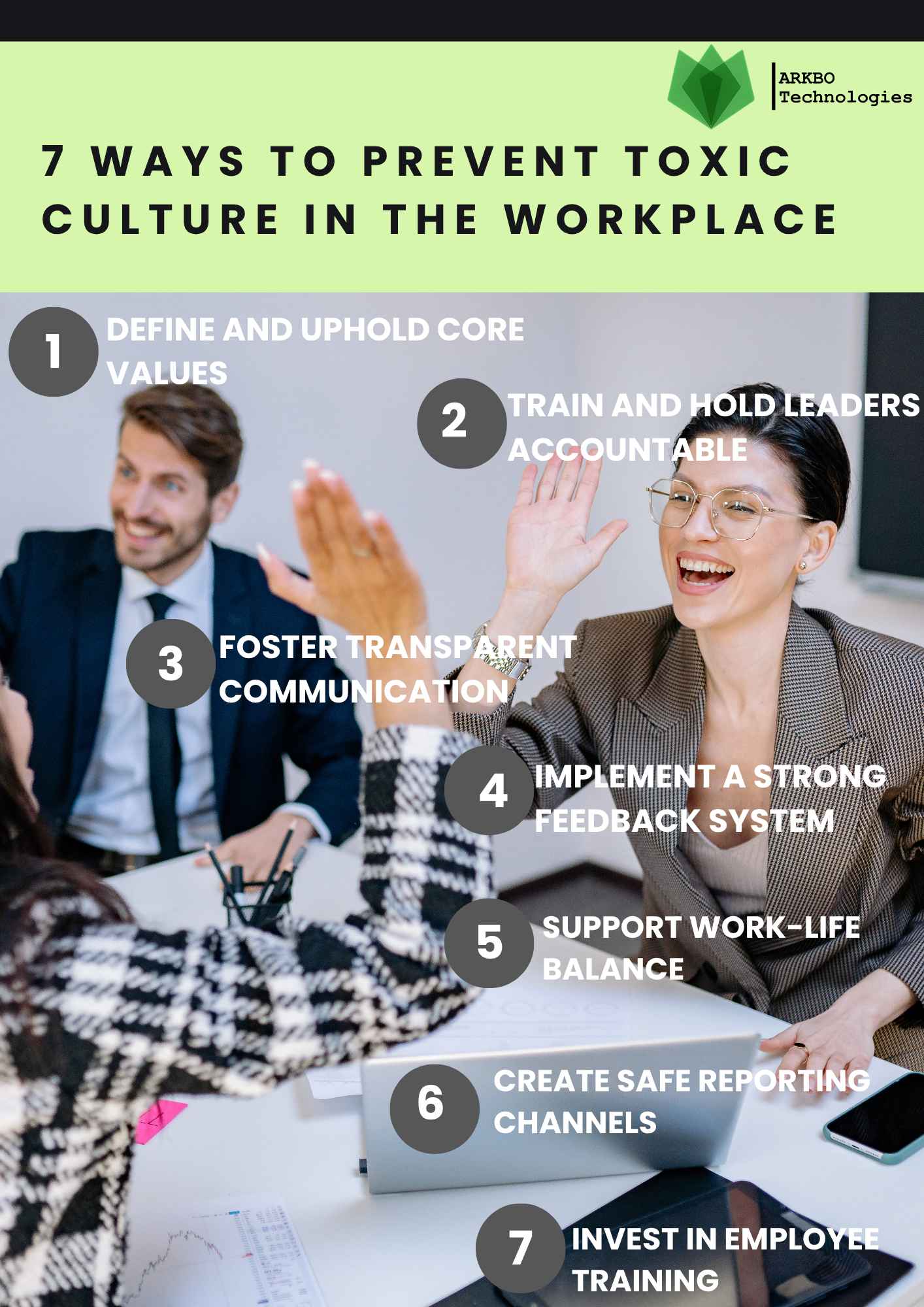
Every worker desires a better work environment, which includes a competitive salary, excellent facilities, flexibility, and work-life balance. However, workers are less likely to experience difficulties in a toxic work environment.
A toxic workplace culture not only makes them unhappy but also makes them quit. In fact, employees are ten times more likely to quit a company because of a toxic work environment than because of their salary ( MIT Sloan Management Review).
This blog will examine the traits of a toxic workplace, how to identify them, and doable steps businesses can take to prevent them.
What is a Toxic Workplace?
A toxic workplace refers to any company or organization where employees experience negative behaviors like bullying, favoritism, poor communication, and unrealistic expectations, which make them unhappy, burned out, and eventually leave the company.
Some facts about a toxic workplace:
Toxic culture is 10x more likely to cause turnover than compensation (LinkedIn).
Companies with a strong, positive culture see a 4x increase in revenue growth (Harvard Business Review).
45% of employees cite toxic work environments as the number one reason they quit (Research by TalentLMS and Culture Amp).
A toxic workplace leads to high stress, low productivity, poor mental health, and high employee turnover. It holds back innovation, destroys collaboration, and hurts a company’s brand reputation.
5 Signs of a Toxic Workplace
Let’s look at some prominent signs of a toxic workplace

When mistakes happen in the company, the team starts to point fingers instead of working together to solve problems. Basically, they look for a person to blame and stay away from any possible punishment. According to Canadian HR Reporter, 47% of employees engage in toxic behavior to protect their reputation, and 45% do so to avoid personal consequences. The blaming behavior erodes trust and collaboration among the employees.
According to The Happiness Index, 93% of workers place equal importance on work-life balance and compensation. This suggests that they value an environment at work that encourages a healthy balance between their personal and professional lives.
A toxic workplace is defined as any company or organization where workers experience negative behaviors like bullying, favoritism, poor communication, and unrealistic expectations that lead to their disillusionment, departure, or even resignation.
Fun fact: Globally, poor work-life balance contributes to an estimated $190 billion in work-related stress costs annually (EHSToday.com).
Hostile or unprofessional behavior
Shouting, insults, rude emails, and passive-aggressive remarks are all signs of hostility. About 23% of workers worldwide have faced some form of workplace violence (physical, verbal, or psychological), showing how common this problem is across all industries (ehstoday.com). Women are 2.7 times more likely than men to experience sexual harassment, especially in male-dominated fields (Jobera.com). Such hostile behaviors create fear and make them refrain from engaging at work.
When job promotions, recognition, or rewards are provided to any employees due to their family relationships rather than performance, it creates a sense of injustice, resentment, and distrust among employees. Sadly, 39% of employees have witnessed favoritism at work, according to ECI. This unfair practice limits opportunities for capable people, which reduces diversity and new ideas. It can also harm the company’s reputation and performance.
Another sign of a toxic workplace is increased employee turnover, i.e., employees quitting their jobs. Despite best efforts, when employees are not recognised or respected, they feel stressed, undervalued, or unhappy. Such feelings make them want to leave instead of staying and growing with the company.
Toxic workplaces were cited by 45% of employees as the number one reason they quit (FlexJobs). When employees are constantly leaving the company or team, it’s often a sign of deeper cultural problems. Moreover, high turnover also disrupts operations and damages team morale.
7 Ways To Prevent Toxic Culture in The Workplace
Let’s look into some steps that can be taken by decision-makers to make the workplace fair for everyone.

The organization must ensure that they have strong workplace values that everyone understands. These values should guide behavior, decisions, and communication across all levels.
Accountable leaders continuously behave in ways that foster productivity, equity, and respect, which helps to avoid toxic behaviors and boosts team morale.
76% of employees believe their manager sets the tone for the workplace culture (SHRM). Thus, an organization must invest in leadership training, emotional intelligence, and performance feedback.
When communication is clear in the organization, it encourages honesty and openness. Moreover, there must be inclusive and two-way communication so that employees feel respected and heard. This reduces misunderstandings and promotes alignment.
A strong feedback system encourages open communication and trust. When giving and receiving feedback becomes normal, problems are spotted and solved early, before they grow. Regular check-ins show employees that their opinions matter, making them feel respected and heard. This reduces misunderstandings, improves relationships, and creates a healthier, more positive workplace.
You must ensure to respect employees’ time, which includes flexible schedules, mental health resources, and encouraging time off. These practices make employees more engaged with company activities and more likely to stay in the company for a longer time.
Employers can provide a secure and anonymous way for employees to report harassment, discrimination, or other issues. They must ensure every employee complaint is addressed fairly and confidentially to foster trust.
To eliminate toxic workplace culture, not just leaders, but also employees should be given training. Such training helps employees grow in their profession. Further, they can have better formal communication, effective conflict handling, and work respectfully with others.
A modern employee training system, like a Learning Management System (LMS), helps employees take training anytime, anywhere. These platforms offer interactive e-learning, real-time feedback, and personalized learning paths. LMS also aids in inclusive and equitable training, offering opportunities for all staff.
ARKBO LMS is an LMS system in Nepal, developed to change the traditional corporate training. With this platform, companies can offer employees learning in a fun and gamified way. Further, this platform tracks employee progress clearly; employers can see growth and find areas to improve.
A toxic workplace reduces employee satisfaction and drives people away. Unrealistic work expectations, a blame culture, animosity, partiality, and a high employee turnover rate are typical indicators. These actions harm the company's reputation, productivity, and morale.
To make an engaging and friendly workplace, organizations can:
establish clear core values
train and hold leaders accountable
promote open communication
put in place robust feedback systems
support work-life balance
offer secure reporting channels
provide employee training
For employee training, ARKBO LMS is a great choice as it provides an engaging and flexible learning environment. Book a Demo to discover features of the LMS.